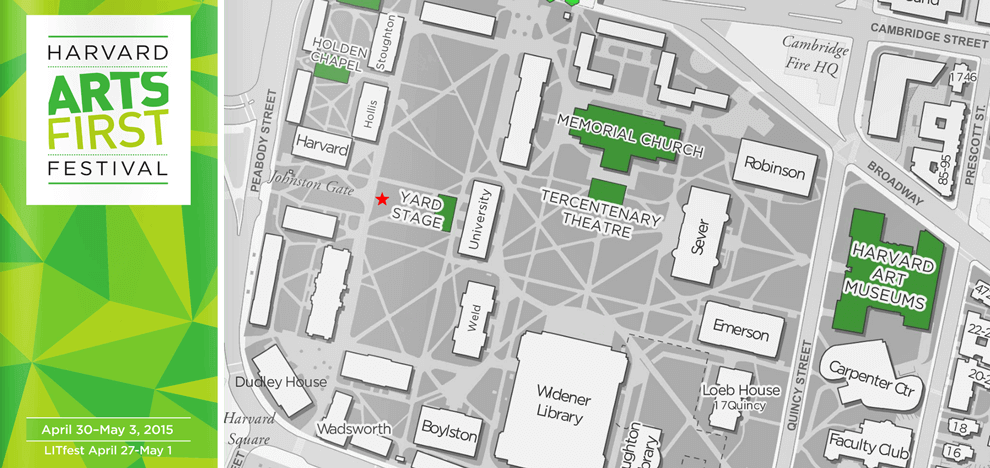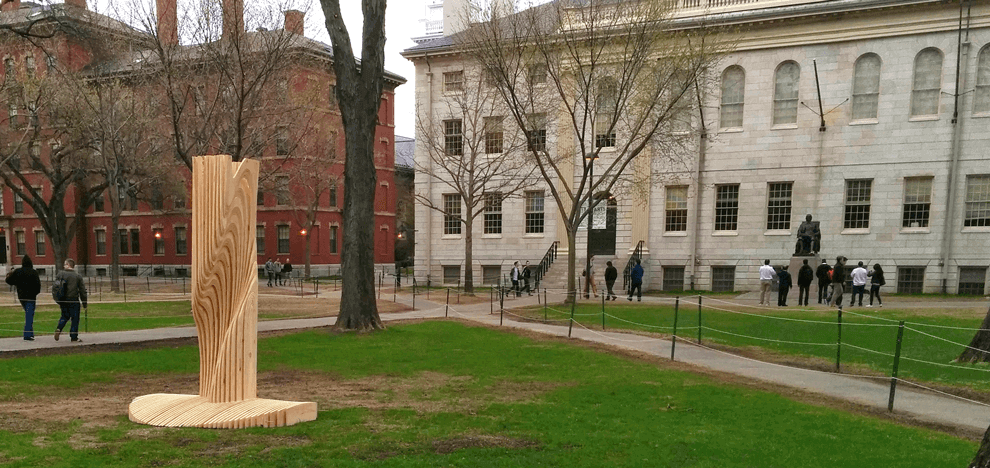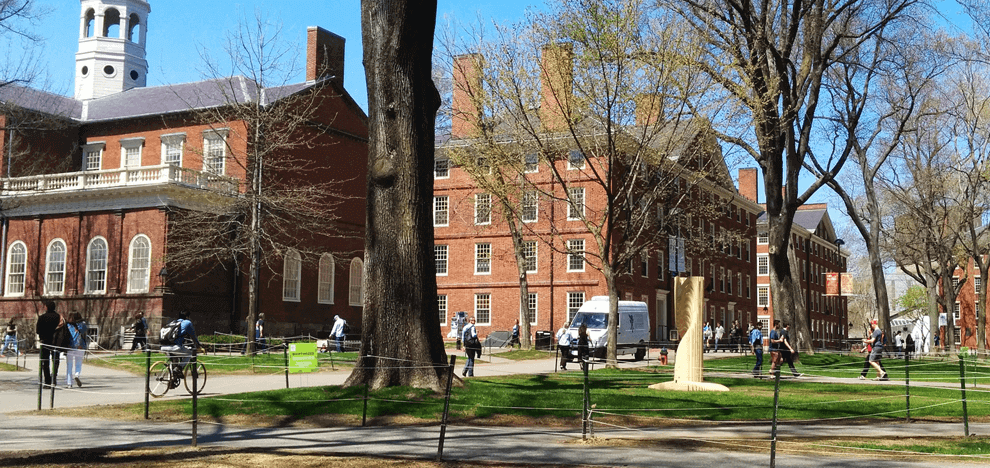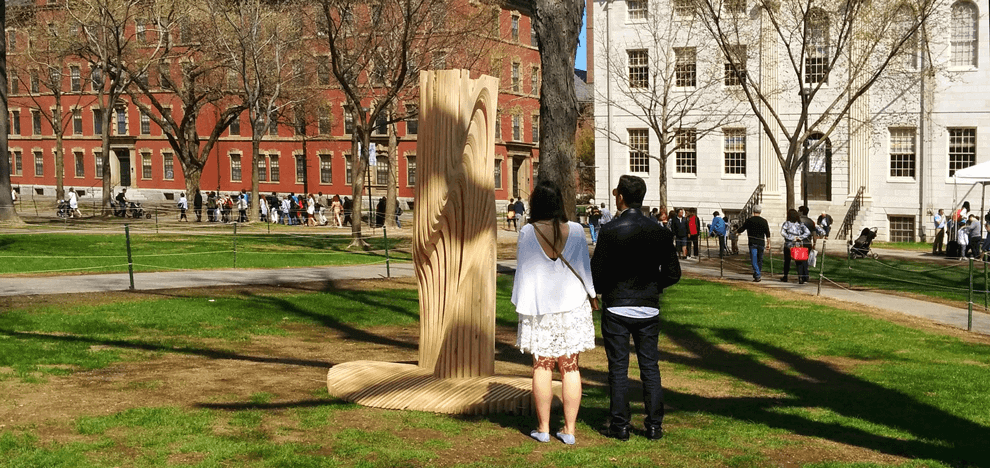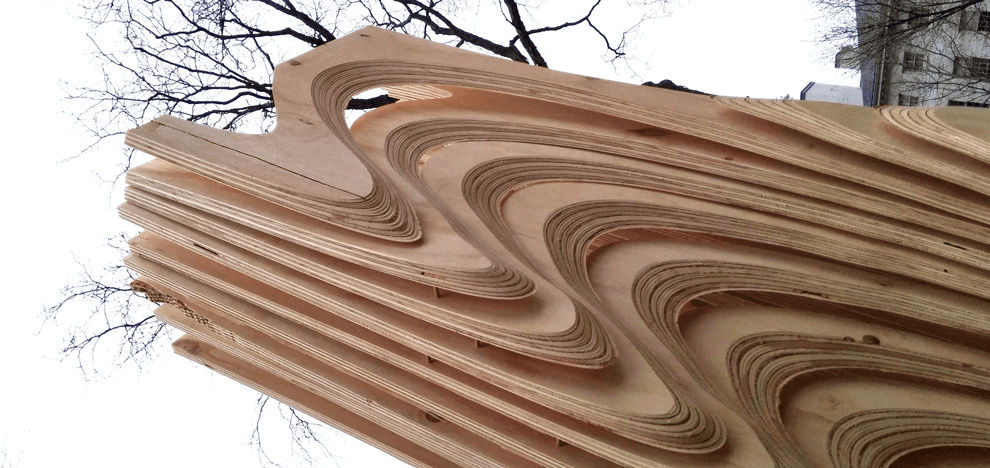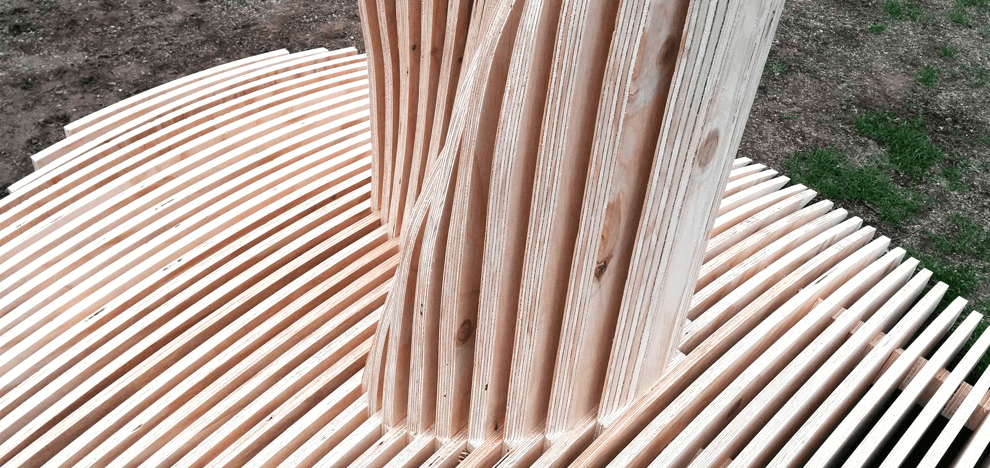Bioptimized
Every spring, Harvard celebrates the creativity of its faculty and students through a week long celebration called Arts First. The festival is a public event with many free performances and activities for Harvard and Cambridge communities. Selected by the Arts first committee, this sculpture arose out of research being done in the field of computational design and digital fabrication at the Graduate School of Design. Designed to be situated on the strong axis between the historic Johnson Gate and the John Harvard Statue, the sculpture intriguingly changes appearance from nearly transparent to monolithic as one circumnavigates it. Utilizing a newly developed voxel modeling software called Monolith by Associate Professor Panagotis Michalatos and Andy Paine, the global form was created to push the boundary of structural integrity of two intersecting cylinders. The intersection was placed in such a way so as to maximize the cut surface area in order to fully express the layered aesthetic of the plywood. The project’s objective was to develop a custom piece that would be both structurally daring and artistically beautiful; a piece that would express the inner plies, the layers of different colored wood and different direction of grain. A 3-axis CNC milling machine was used to fabricate the sculpture. Milling was carried out on both sides of the plywood plies to reveal the inner layers on both sides. AraucoPly plywood plies were used as they are very thick, consistent, came from sustainable sources, was environmentally friendly and had the right color. As the sculpture was structural, that plies has to be self supporting.
